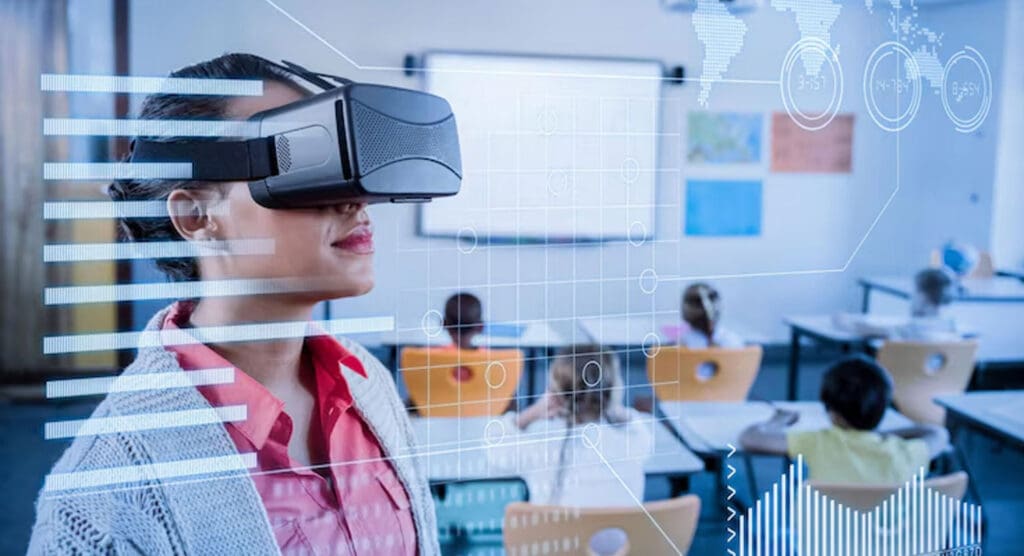Neeraj Saxena, Pro-Chancellor – JIS University, Kolkata

As we speed into a future shaped by Artificial Intelligence (AI), education is undergoing a profound transformation. Traditionally, technology has supported human learning—now, we’re entering a world where AI doesn’t just assist; it leads. This shift has turned the tables: humans are no longer just users of intelligent systems but part of the system itself.
1. The AI-Driven Learning Ecosystem
AI is no longer just a helper in
education—it is becoming the main architect of the learning experience.
Whether it’s a personalized lesson on quantum physics or a language-learning
module tailored to a student’s pace, AI systems are increasingly efficient in
curating and delivering educational content. What once required a team of
curriculum designers and subject matter experts can now be automated with
algorithms that evolve in real time.
What AI Can Now Do:
|
Traditional Education |
AI-Powered Education |
|
Teachers design curriculum |
AI generates custom content in seconds |
|
Fixed assessments for all |
Adaptive tests that evolve with the
learner |
|
One-size-fits-all pace |
Personalized pacing for each student |
|
Manual grading |
Instant evaluation with real-time
feedback |
Example:
- A student learning calculus in a traditional
classroom waits for weekly quizzes.
- In an AI-powered system, the platform generates real-time
problems, tracks eye movement for attention, adjusts difficulty
dynamically, and offers video explanations tailored
to confusion points.
This ecosystem uses AI to curate
content, generate critical questions, and even evaluate
emotional responses to maintain engagement. AI doesn’t stop at
content—it now crafts questions that assess deeper levels of cognition and can
adapt to the learner’s progress, identify gaps in understanding, and
recalibrate the learning path.
2. The Great Inflection: From
Human-Led to Machine-Led
Historically, humans created tools to
help themselves: from the wheel to the computer. But with AI, tools are
now learning from us—our teaching methods, content, and behavior become
data for AI’s growth.
Throughout history, tools and machines have
served as extensions of human capability—enabling us to generate knowledge,
advance civilization, and improve quality of life. From the printing press to
computers, technology has amplified human potential while remaining
fundamentally under human direction.
Key Shift:
|
Old Model |
New Model |
|
Humans teach machines |
Machines learn from human behavior and
teach others |
|
Tools serve us |
We become part of the system training AI |
Example:
Teachers who upload thousands of lessons on
platforms like YouTube or Coursera are indirectly training AI systems like
ChatGPT or Khanmigo to generate similar or even better explanations.
This is the inflection point—AI
evolves by consuming and reorganizing our intellectual output, flipping the
traditional knowledge hierarchy. The machine is learning from us as we learn
from it, creating a feedback loop where human learning becomes training data
for the next generation of AI.
3. Humans as Tools in the AI System
With AI capable of delivering
instruction, humans risk becoming the supporting cast in their
own educational narratives.
Scenario:
Imagine a virtual classroom:
- A student logs in.
- The AI assesses their prior learning, emotional state, and
attention span.
- It designs a personalized SPRINT (Self-paced, Problem-based, Reflective,
Innovative, Navigated, Transformative) module targeting Bloom’s
levels 5 (Evaluate) and 6 (Create).
- The teacher? Possibly analyzing data on the dashboard or
resolving edge-case issues.
In this setup, the machine is the
main teacher. The human becomes a monitor, analyst, or emotional
anchor. The teacher’s role, once exalted as the cornerstone of education,
becomes that of a facilitator, observer, or interpreter. Even learners may find
themselves responding to AI-generated stimuli, nudged and guided by intelligent
systems.
4. From Authority to Ethics and Empathy
Humans aren’t being removed—they’re
being repositioned. The new-age educator must evolve into a mentor,
an ethical guide, and a human interface for emotional intelligence—qualities
that AI still struggles to replicate meaningfully. The teacher of tomorrow must
focus on:
- Mentorship and emotional intelligence
- Ethical reasoning and guidance
- Helping students question AI outputs
Example:
An AI may suggest a solution that is
technically correct but ethically questionable (e.g., a business decision that
increases profit but causes layoffs). Here, a teacher’s role is crucial in
fostering moral judgment.
Thus, education shifts from
information delivery to wisdom cultivation. Teaching will become
less about delivering knowledge and more about fostering judgment, values, and
a sense of purpose.
5. The Paradox of Control
There’s a deep irony: We built AI to serve
us. Now, in education, we are following its lead—responding to
prompts, completing pathways it sets, and validating its suggestions.
|
Control Element |
Traditional Model |
AI-Led Model |
|
Curriculum |
Designed by educators |
Shaped by AI patterns and data |
|
Learner pathway |
Pre-set or flexible |
Predicted and adjusted by AI |
|
Assessment |
Periodic and structured |
Continuous and adaptive |
Critical Reflection:
Who is in control now? If learners
simply react to AI prompts and follow
machine-suggested paths, are they still autonomous?
The paradox becomes even more profound when
we consider that the AI systems directing our learning were themselves trained
on human-generated knowledge. We created these systems, fed them our collective
wisdom, and now find ourselves guided by the product of our own creation—a
digital offspring that has synthesized human knowledge in ways we could not
have manually accomplished.
6. Rethinking Educational Design
To avoid being tools, humans must
reclaim agency in education.
Heutagogy as the Answer:
Heutagogy emphasizes:
- Self-determined learning
- Learner autonomy
- Exploration over instruction
AI + Heutagogy Integration Table:
|
Heutagogical Element |
AI Enablement |
|
Learner sets goals |
AI recommends but allows override |
|
Flexible learning paths |
AI adapts based on learner input |
|
Reflective learning |
AI prompts critical reflection questions |
|
Continuous feedback |
AI provides real-time analytics |
Example:
A journalism student uses AI to:
- Discover misinformation trends (AI data)
- Choose a topic of public concern (learner’s choice)
- Write an article (learner’s work)
- Receive AI feedback on bias, tone, and structure (collaborative
review)
If we align AI with heutagogical
principles—enabling learners to define their goals, paths, and pace—we may
preserve human agency in this digital renaissance.
7. The Data Exchange: Who Really
Benefits?
Each time a learner interacts with AI, data
is created—about attention span, question patterns, learning preferences.
Key Questions:
- Are students informed their data is being harvested?
- Who owns this data—student, institution, or platform?
- Are learners being compensated or benefitting?
This is where data ethics and educational
justice must be brought into policy and practice. Are learners aware
that their educational journey, their mistakes, their breakthroughs, and their
questions are becoming fodder for AI optimization? Do they benefit
proportionally from this data extraction?
8. Conclusion: Becoming More Human, Not
Less
The reversal of roles—from AI as servant to
AI as guide—doesn’t have to mean human redundancy. Instead, it
demands that we become:
- More creative
- More emotionally aware
- More critically engaged
The future of education is not
about humans serving AI but about using AI to become more human—compassionate,
curious, wise, and self-aware.
Final Reflection:
Are we ready to co-lead this educational
future? Do we have the vision and courage to build systems that amplify human
potential rather than diminish it?


